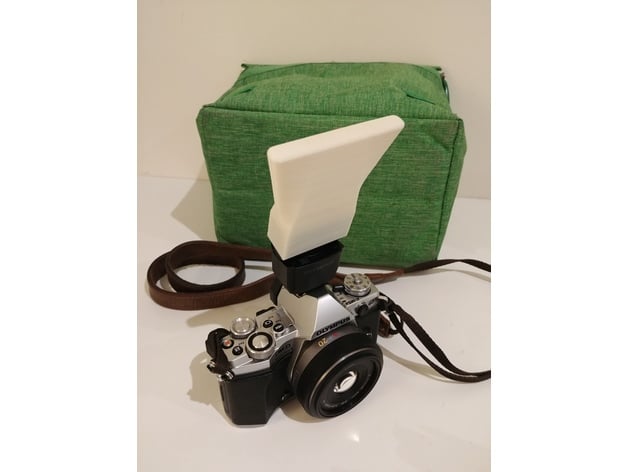
I love Thingiverse! It's a repository for the obscure, but it often has exactly what one needs. I recently got an Olympus camera which came with a tiny external flash. I looked on Thingiverse, and sure enough, someone named Dale Armit in Australia had designed a snap-on diffuser for it.
I downloaded it right away and recently got around to printing it in Inland PLA (white, of course).
The first try did not come out so well. The first few layers had a lot of gaps and failures to adhere. And the rest of it had little gaps as well. It's pretty common to have issues the first time around, and fortunately little things like this don't use much time or plastic: it only used $0.33 of filament. So I changed several settings:
- Reduced the speed
- Increased the temperature
- Measured the actual filament diameter with calipers. It was about 3.5% smaller than the previous filament I used. That doesn't sound like much, but it causes the software to underestimate the amount of plastic to extrude.
- Checked the fan speed settings.
- Closed the air conditioning vent in my office, so a blast of cold air would not interfere with adherence.
When you're dealing with fractions of millimeters, these little variations can make all the difference!
I was able to test the fit with this part, and it seems to be just fine. The next iteration is looking good.


This model turned out to be too thick, blocking too much light from the flash. I designed my own version with the same dimensions, but able to be printed in “vase mode” which is a single, thin layer. It transmits much more light. And though it’s a single layer, it’s tough enough that it’s survived living in my camera bag. I shared it on Thingiverse at https://www.thingiverse.com/thing:4147051
ReplyDelete